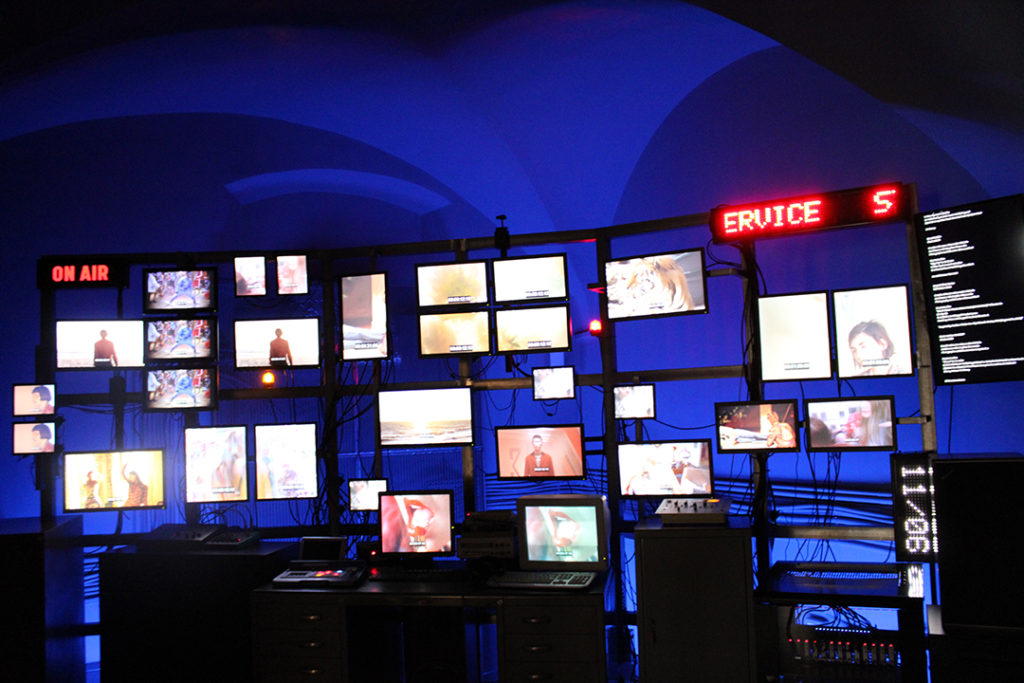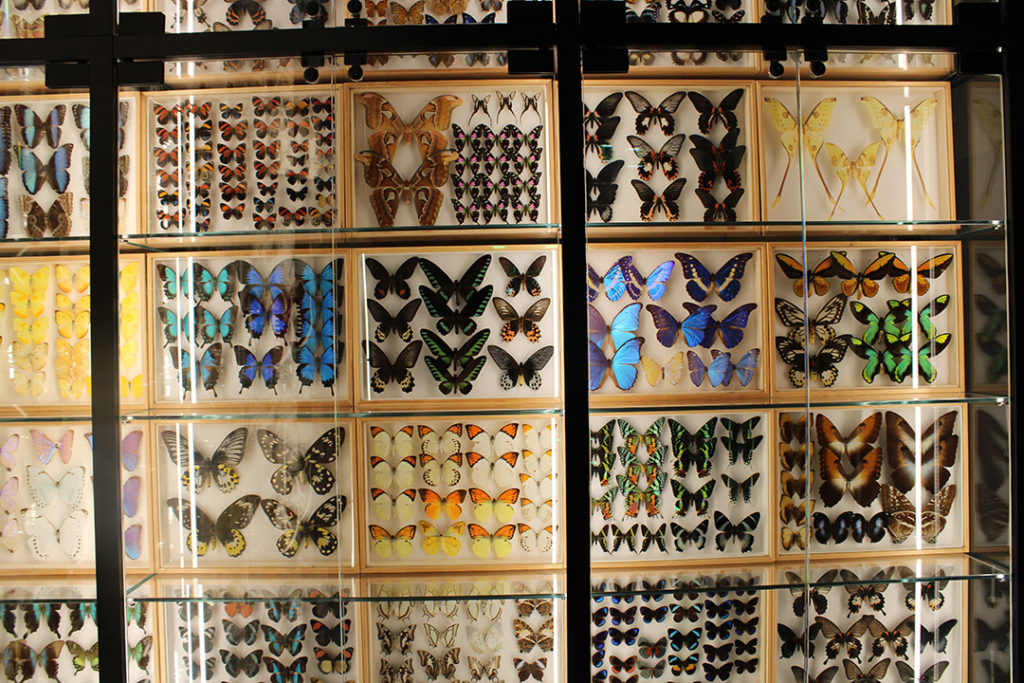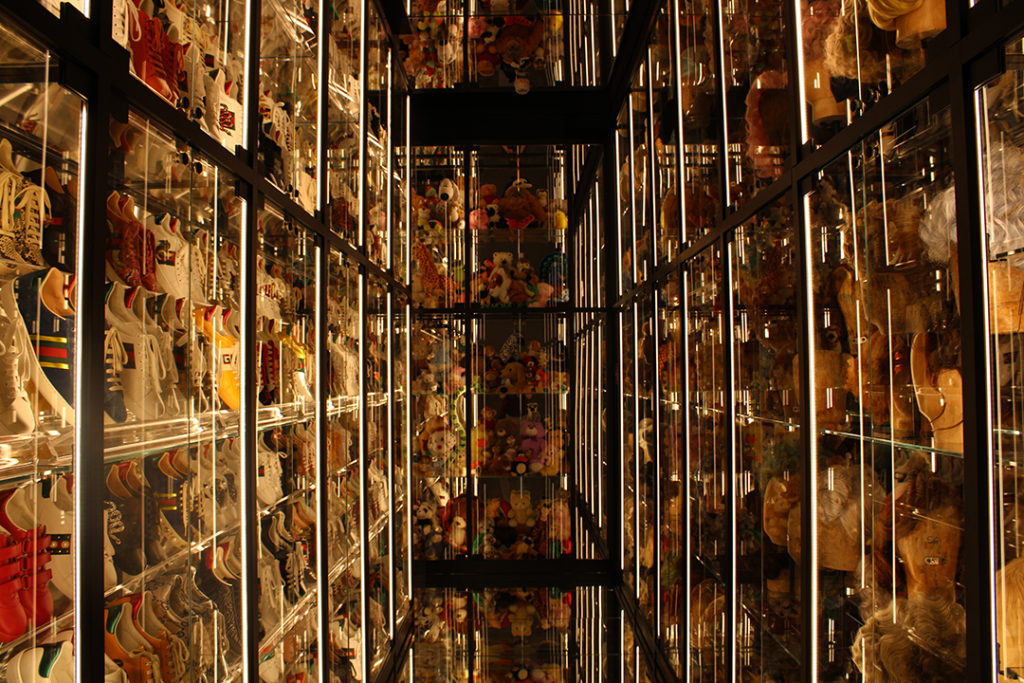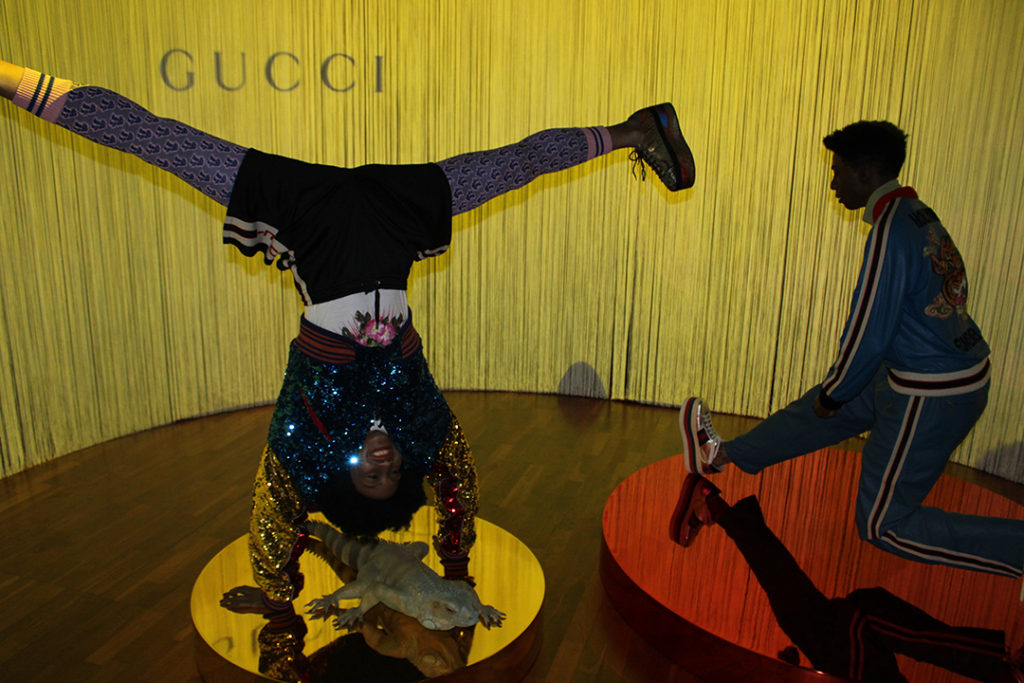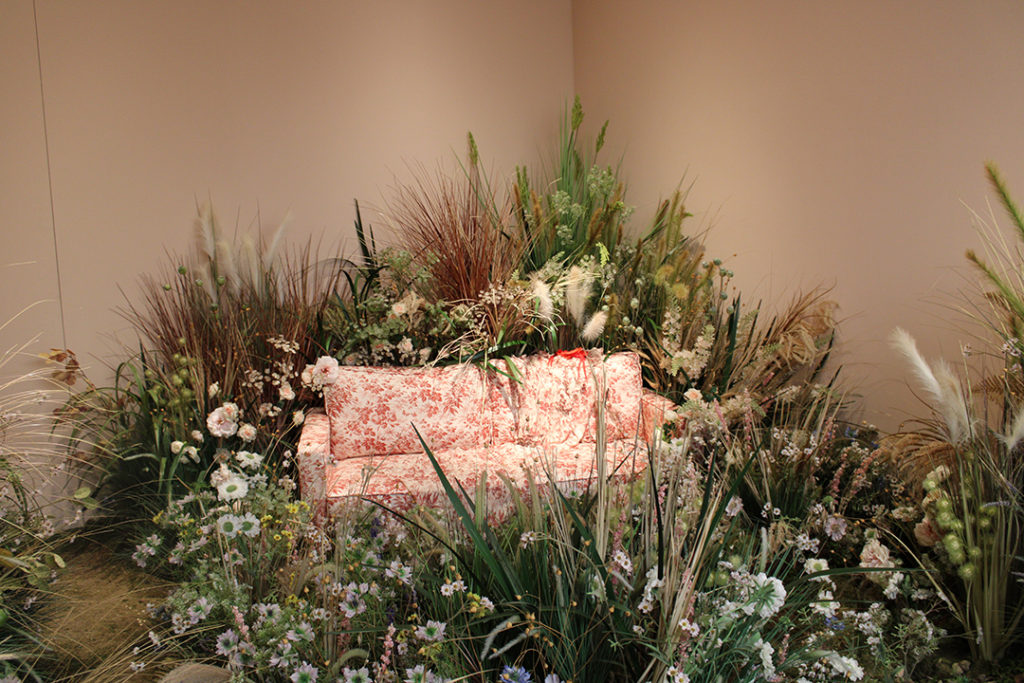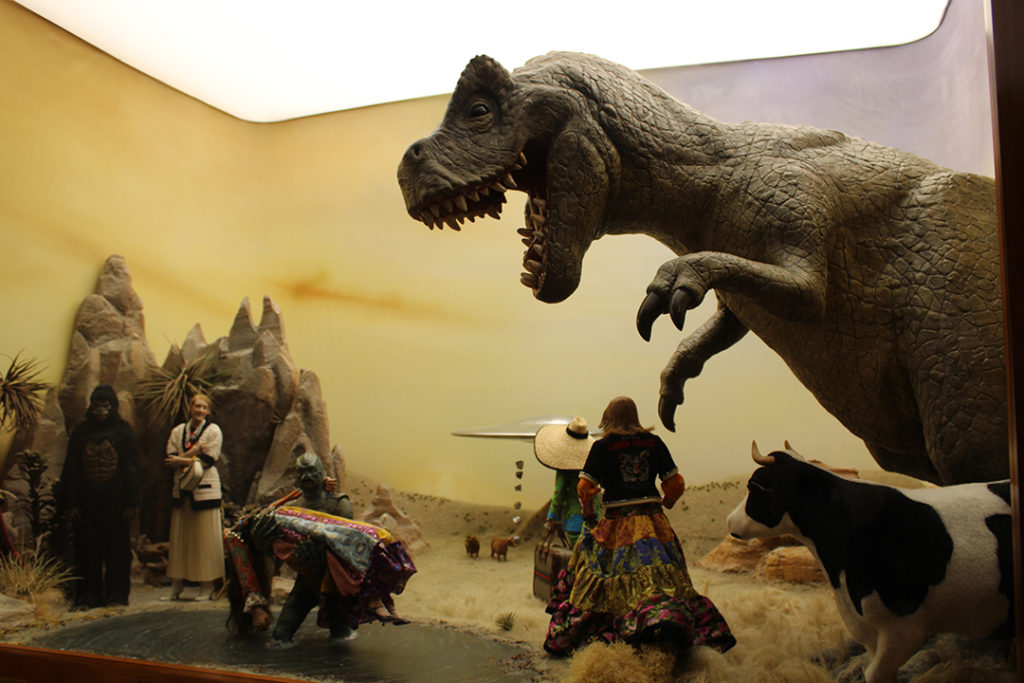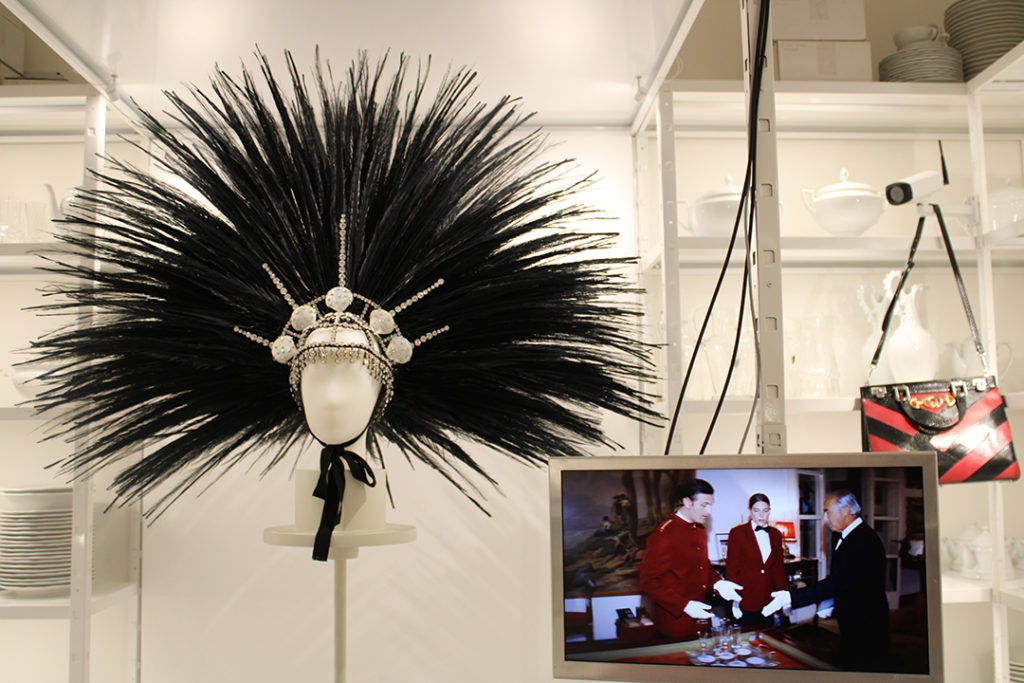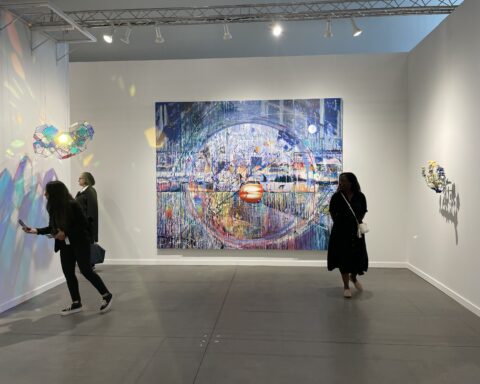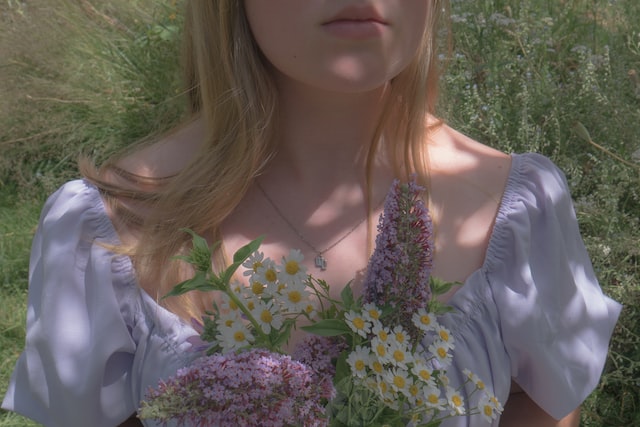
Much has been made about Gucci Garden since its opening in 2011 in Florence. Formerly known as the Gucci Museum, it was re-christened under its new name in 2018 by the Alessandro Michele-led Gucci. The Gucci Garden complex contains a host of exhibition spaces (the centerpiece of the museum), a boutique where one can purchase Gucci goods, a Michelin-starred restaurant, and a bookstore that carried other gifts for one to purchase as well.
When I dropped into Gucci Garden in June 2022, the exhibition space was still showing the “Archetypes” exhibit that opened in May 2021 as a part of the celebrations for Gucci’s 100th anniversary as a brand. “Archetypes” recreated 15 of Alessandro Michele’s more interesting Gucci ad campaigns. Michele, who took over in 2015 as creative director upon Frida Giannini’s departure from the company, has certainly built up a distinctive aesthetic while in his role. “Archetypes” did that ongoing legacy justice.
When I arrived at the museum, there was a long line of would-be attendees waiting to enter. Predictable, since there has always been strong interest centered around the Gucci brand in pop culture. What was disappointing, however, was the fact that Italy was in the midst of a heat wave and the attendants at the door were inexplicably only allowing those in line into the building at a seeming trickle. One can only assume that Gucci Garden was still in the process of taking coronavirus precautions and not allowing the building to become too crowded, but there were a few museum attendees that got to exit and re-enter multiple times. Even if this was well within the scope of the museum’s rules, it was a terrible feeling to those that were forced to swelter in line for about 40 minutes before finally being allowed inside.
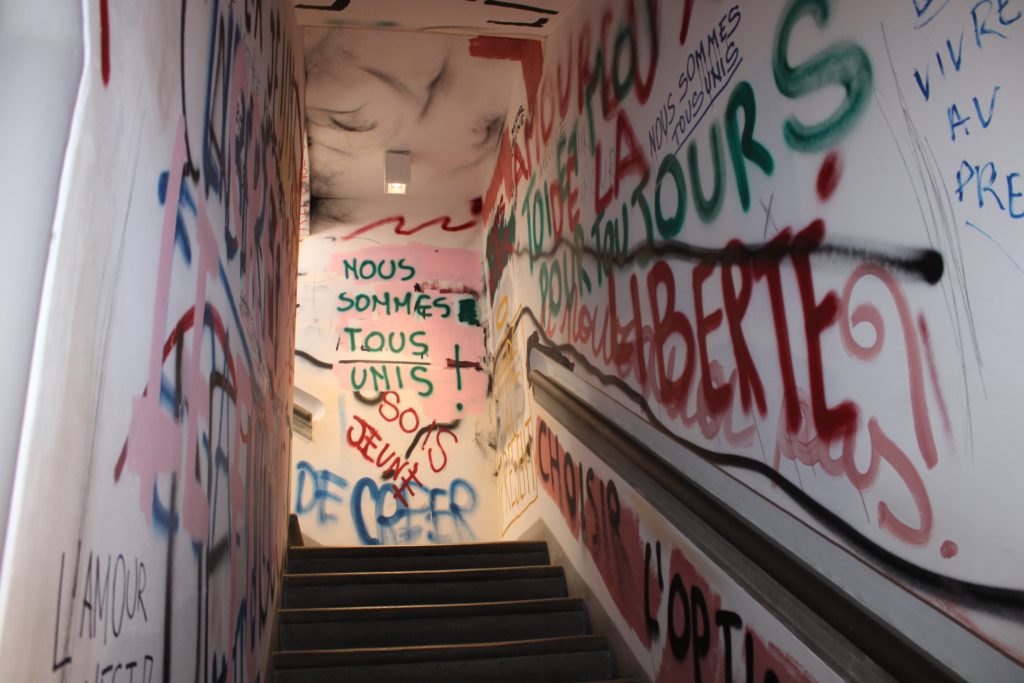
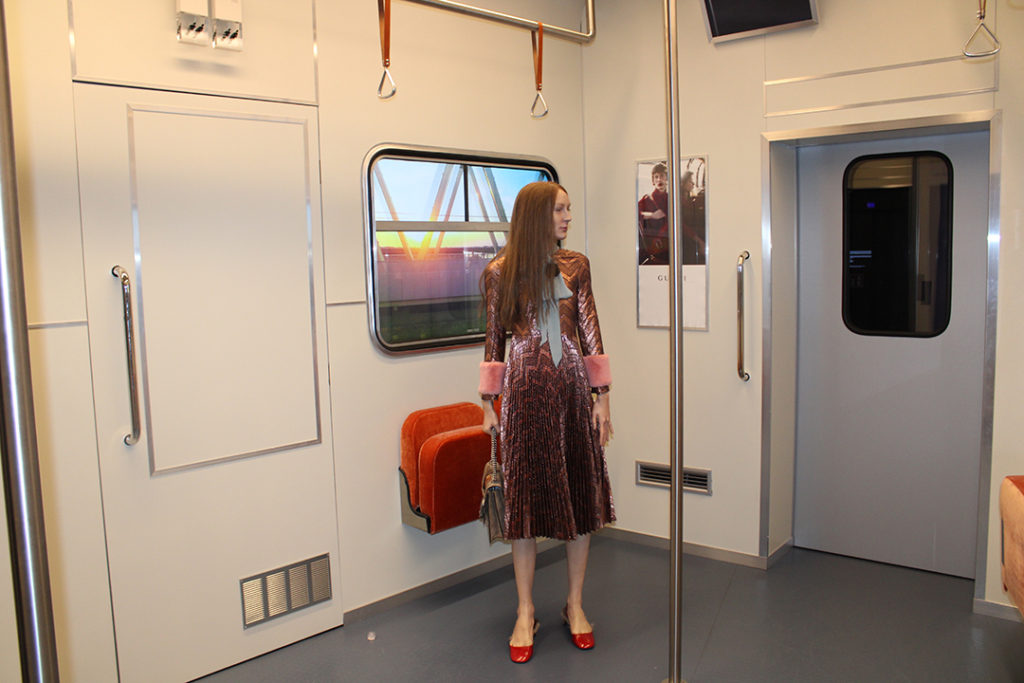
Once in, my husband (who accompanied me; it was our honeymoon, after all) and I got our tickets from the desk agents and proceeded to ascend the stairs through a corridor whose ceiling and walls were fully covered with graffiti – an apparent reference to the student protests in Paris in May 1968. Once we got upstairs, we entered an exhibit space made to look like a subway car, complete with straps, poles, and seats. There was even a “passenger” (who was actually a mannequin) conveniently dressed in head-to-toe Gucci and sound effects that gave the impression that you were on a moving train.
Various exhibit spaces followed that one up, with some carrying the following scenes:
- A room with multiple small screens playing footage of Gucci Beauty models
- A room with mirrors arranged to create a maze of reflections of both oneself and others
- A room designed to resemble the bright lights of Tokyo, Japan
- A room packed from top to bottom with various items that are a part of offbeat collections of objects
- An exhibit behind a metallic fringe curtain containing dancing mannequins
- A room containing dinosaurs, aliens, & other creatures, with a sofa situated in the midst of tall grass
- A room containing mostly various dishes with Gucci accessories woven in among them
- A red and pink bathroom occupied with retro-dressed mannequins – in other words, they were very Gucci
“Archetypes” Photo Gallery
If the objects on display in that assortment of exhibit spaces seem quite disparate, it is because they were. There was no real common thread binding many of the exhibit sections. What there was, however, was a common thread of eclecticism and cultivated wildness that has been a marker of Michele’s entire tenure as Gucci’s creative director. “Archetypes”, after all, was meant to be a celebration of 15 of his previous ads and his creative vision in general.
That said, “Archetypes” is at times both over-the-top and guilty of sensory overload in many aspects. If what one is seeing is pleasurable enough, then this won’t be a bother. If one is sensitive to excessive amounts of crowding and clutter, however, then certain sections of this exhibit could be a panic-inducer.
“Archetypes” is also a stellar example of installation art. It is hard to recount from recent memory a fashion exhibition that was so wholly immersive and enjoyable to absorb. For those that were not familiar with Alessandro Michele’s work before attending “Archetypes”, they certainly would be after visiting these various rooms.
The boutique portion of Gucci Garden, inside of which photos are not allowed, held items that were unique to Gucci Garden; my pockets had no patience for the prices, however, so we diverted to the bookstore. Inside the bookstore was a host of additional items such as cards, journals, pillows, and the like; these items were surprisingly affordable for the average person. One cannot say the same for the restaurant, which was priced according to its Guccified surroundings.
Gucci Garden is an impressive sight to behold, and one that is well worth traveling to view.
Gucci’s “Archetypes” exhibition is currently on view at Gucci Garden, P.za della Signoria, 10, 50122 Firenze FI, Italy.
To subscribe to Manic Metallic‘s Substack newsletter, click here. To follow us on Bluesky, click here.
